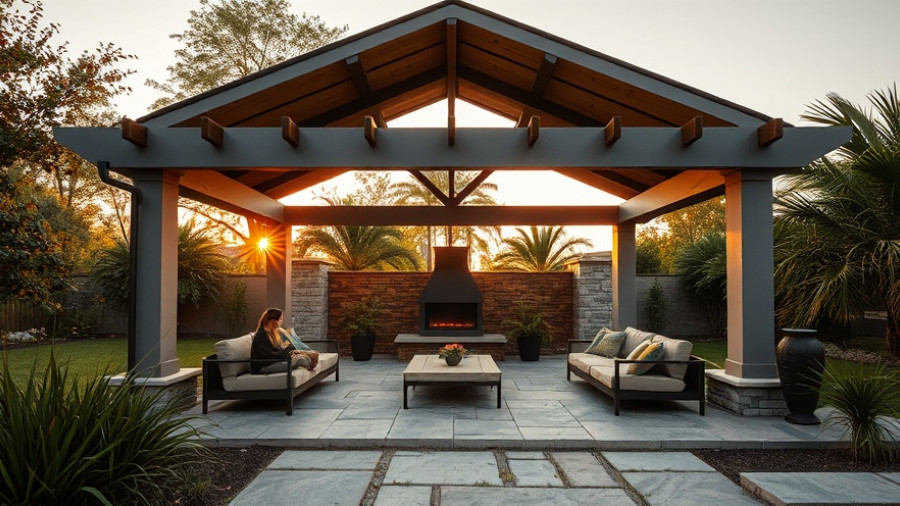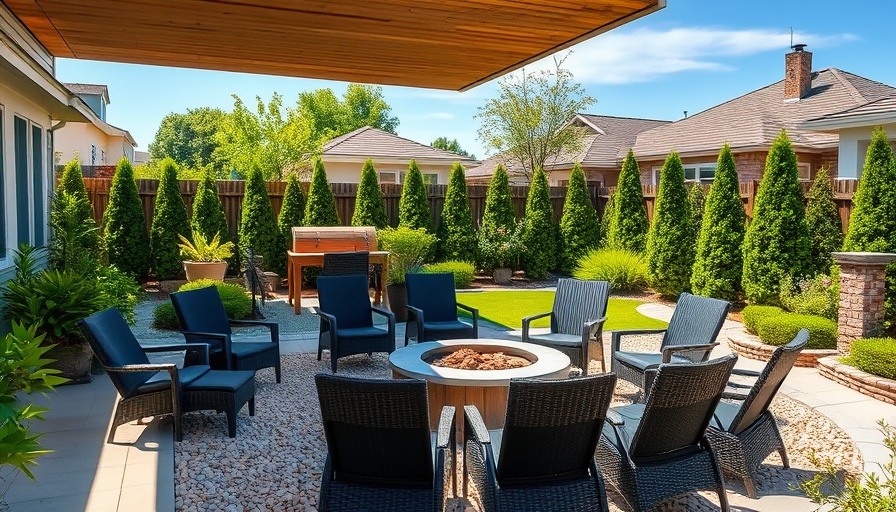
Understanding the Importance of Fire-Wise Landscaping
In regions prone to wildfires, especially in California, homeowners must think creatively about how to protect their properties. Firescaping—a strategy that combines sound landscape planning with the principles of fire safety—presents an effective approach. This article explores how homeowners can enhance their safety without sacrificing the visual appeal of their landscapes.
What is Firescaping?
Firescaping is the process of designing landscapes with specific strategies to reduce fire risk. This involves choosing fire-resistant plants, using non-combustible materials for features such as patios and decks, and maintaining proper spacing between plants to create defensible spaces. A well-planned firescape blends safety and aesthetics, ensuring that homes are better protected against wildfires.
Key Strategies for Fire-Wise Landscaping
There are several effective strategies for creating a fire-wise landscape. Homeowners should focus on the following:
- Select Fire-Resistant Plants: Use native and drought-resistant species that are less likely to catch fire. Plants like lavender, sage, and certain varieties of ornamental grasses are known for their fire-resistant qualities.
- Create Defensible Space: This involves clearing away highly combustible materials like dry leaves and dead plants within a specific radius from the home. The goal is to create a buffer zone that can slow or stop the spread of fire.
- Incorporate Hardscaping: Use non-flammable materials such as stone or concrete for paths, patios, and other outdoor structures. These features not only enhance visual appeal but also offer safety.
Historical Context: California's Fire Challenges
California has a long history of devastating wildfires, with increasing frequency and intensity in recent years. Understanding this historical context is crucial for homeowners seeking to create fire-wise landscapes. The combination of prolonged droughts, hot temperatures, and dense vegetation makes certain areas particularly vulnerable to wildfires. In 2020, California experienced some of the worst fires in its history, underscoring the urgent need for proactive measures.
Future Predictions: The Landscaping Trend Towards Fire Safety
As climate change continues to impact weather patterns, the trend towards fire-safe landscaping will only grow. Homeowners will increasingly seek out landscape architects and designers who specialize in creating fire-wise environments. Moreover, organizations are likely to ramp up efforts to educate the public about the importance of firescaping, potentially leading to new regulations that encourage or mandate fire-safe practices.
How Homeowners Can Get Started Today
For those wanting to implement fire-wise landscaping, here are practical insights:
- Consult with Professionals: Engage with landscape designers who understand fire safety guidelines specific to your area.
- Invest in Maintenance: Regularly maintain landscapes by pruning overgrown vegetation and clearing debris that could fuel a fire.
- Stay Informed: Keep abreast of local fire safety guidelines and recommendations from fire safety organizations.
Common Misconceptions About Fire-Wise Landscaping
Many homeowners believe that implementing fire-wise landscaping means sacrificing beauty for safety. This is a common misconception; in reality, a fire-wise landscape can be both beautiful and functional. The key lies in selecting the right plants and materials that comply with fire safety guidelines while also enhancing the aesthetic quality of the property.
Getting Involved: Community and Collective Action
Homeowners can join local community efforts aimed at promoting fire-safe practices. By participating in community workshops, residents can learn from experts and share knowledge. Initiatives like neighborhood clean-up days can help keep properties defensible and can foster a sense of community that prioritizes safety.
The conscious integration of fire-wise principles into landscaping practices can significantly increase the safety of California homes. It’s time to take action and prioritize the protection of our homes—and communities—as we navigate the challenges posed by wildfires.
 Add Row
Add Row  Add
Add 




Write A Comment